 I received from Dr. Buba Kudava, the director of the National Centre of Manuscripts in Tbilisi, an interesting announcement concerning the Kartvelological Summer School “Georgian Script,” which shall take place from 17th to 26th July 2012 in Tbilisi, Georgia.
I received from Dr. Buba Kudava, the director of the National Centre of Manuscripts in Tbilisi, an interesting announcement concerning the Kartvelological Summer School “Georgian Script,” which shall take place from 17th to 26th July 2012 in Tbilisi, Georgia.
“The school program is intended for foreigners interested in Georgian culture, especially in Georgian script and manuscript heritage.
The target groups of the program are foreign researchers and students. The working language of the Summer School is English.
The aims of the kartvelological summer school “Georgian Script” is to spread “Georgian Script”, as an important achievement of Georgian culture, on an international level; to popularize Kartvelological sciences, focusing on the multi-faceted, multi-national foundations of Georgian manuscript culture; and to prepare the basis of future international cooperation among the Centre and Summer school attendees.
All costs regarding to accommodation, food and traveling within Georgia of the Summer School’s participants, EXCEPT OF THE TRAVELING COSTS TO AND FROM GEORGIA will be covered by the National Centre of Manuscripts. The Project is financed by the Shota Rustaveli National Science Foundation of Georgia.”
The application form must be sent “no later than 2nd of July, 2012, on this e-mail address: summerschool@manuscript.ac.ge. Successful candidates will be notified by the 7th of July, 2012.” YOU CAN DOWNLOAD THE FORM HERE.
General Program of the Summer School
The working program of the Kartvelological Summer School “Georgian Script” comprises five training modules, exhibition, two workshops and six excursions.
Academic Program
Module 1. Georgian Script
This module includes both theoretical and practical courses.
Theoretical courses of the first module will discuss the following issues: creation of the Georgian script; development and stages of the script (Asomtavruli-Majuscule, Nuskhuri-Minuscule, Mkhedruli-Military); Georgian epigraphy; the Georgian alphabetical system of chronology; Georgian calligraphy; and schools of Georgian calligraphy.
The practical course consists of learning to write the Georgian Mkhedruli Script and creating illuminated capital letters and ornamental elements.
Module 2. Georgian Manuscripts
This module will provide information about old Georgian scriptoriums; writing materials and tools of Georgian manuscripts; miniatures and décor; and manuscript book covers. The course also comprises the following issues: Georgian palimpsests, essential structure of manuscript books (colophons, elements of text, philological-codicological analysis); a review of the history of Georgian secular and ecclesiastical literature; and manuscript collection.
The students will have the possibility to see unique manuscript collections that are preserved in the National Centre of Manuscripts. There are up to 10,000 Georgian manuscript books (5th-19 th centuries) including 4,570 palimpsest pages and up to 4,000 foreign (Arabic, Turkish, Mongolian, Ethiopic, Armenian, Greek, French, German, Hebrew, etc.) manuscripts.
Module 3. The National Centre of Manuscripts.
The module will introduce the organizer of the Summer School—the National Centre of Manuscripts. The National Centre of Manuscripts will be presented as a unique institution which at the same time houses the biggest depository of ancient samples of Georgian script, a library of old and recently printed books, and an important research centre of manuscript inheritance in Georgia. Students will be introduced to Georgian and foreign-language manuscript collection and archival funds. Students will have a chance to inspect the digitization modern laboratory, where digital copies of manuscripts are made. They will also observe the work of specialists in the restoration-conservation laboratory.
In this module there are two workshops. In the first workshop the students will be given an opportunity to participate in the restoration-conservation process, specifically in the simulation of restoring deteriorated leaf. In the second workshop the students will learn how to create paper using ancient techniques.
Module 4. Georgian Historical Documents.
The course analyzes the types and structure of historical documents and constituent structural elements. Examined examples will be taken from the rich collection of the National Centre of Manuscripts, which includes 40,000 Georgian and 5,000 foreign-language documents (10th -19 th centuries). Attention will be focused on the calligraphic peculiarity of the historical documents.
The students will have the possibility to see historical-document collections that are preserved in the National Centre of Manuscripts.
Module 5. Georgian Printed Books.
The course consists of information about old Georgian printed books as well as recently printed books. Students will learn about the creation and development of the Georgian font. They will get a notion about the modern Georgian font and the use of the font in computer systems.
During this module, participants will have the opportunity to see rare-book collections of the National Centre of Manuscripts and National Parliamentary Library of Georgia.
Cultural-Educational Program
Cycle of Excursions:
Excursion to old Tbilisi: Students will inspect the historical part of Tbilisi (Church of Anchiskhati, Sioni, Abanotubani (district of baths), mosque, Narikala, Metekhi).
Excursion to the National Museum: Students will have a chance to inspect the gold fund.
Excursion to Bolnisi Sioni and Dmanisi: Students of the school will inspect Bolnisi Sioni of the 5th century and see one of the ancient epigraphic samples of Georgian script which has reached our period. They will be introduced to the results of archaeological excavations in Dmanisi, a result of which Dmanisi is recognized as the homeland of the first Europeans.
Excursion of two days to Kutaisi, Gelati and Batumi: By visiting the Gelati monastic complex, students will experience a medieval scriptorium of Georgia. They will have a chance to see epigraphic and fresco inscriptions. The students will be given the possibility of discussing and comparing manuscript miniatures and fresco paintings. A visit to Batumi includes a trip to the modern part of the city and to the seaside.
Excursion to National Parliamentary Library of Georgia: This is the biggest depository of printed books and editions. The lecture “Georgian recently printed book” will be held during the excursion.
Excursion to Mtskheta (Jvari Monastery, Svetickhoveli, Samtavro): Students will be introduced to the ancient part of town, its history, myths and legends.










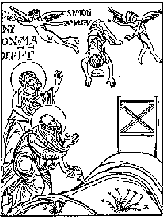




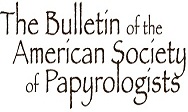
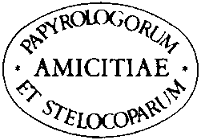
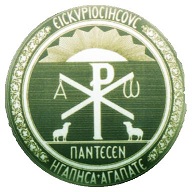





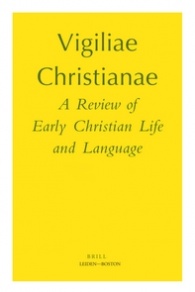






dear sir,l applied for sponsorship to participate at the Georgia kartvelogical summer school,coming up this month and iam yet to get a confirmation.
regards,
Christopher Omubo
+256750868520